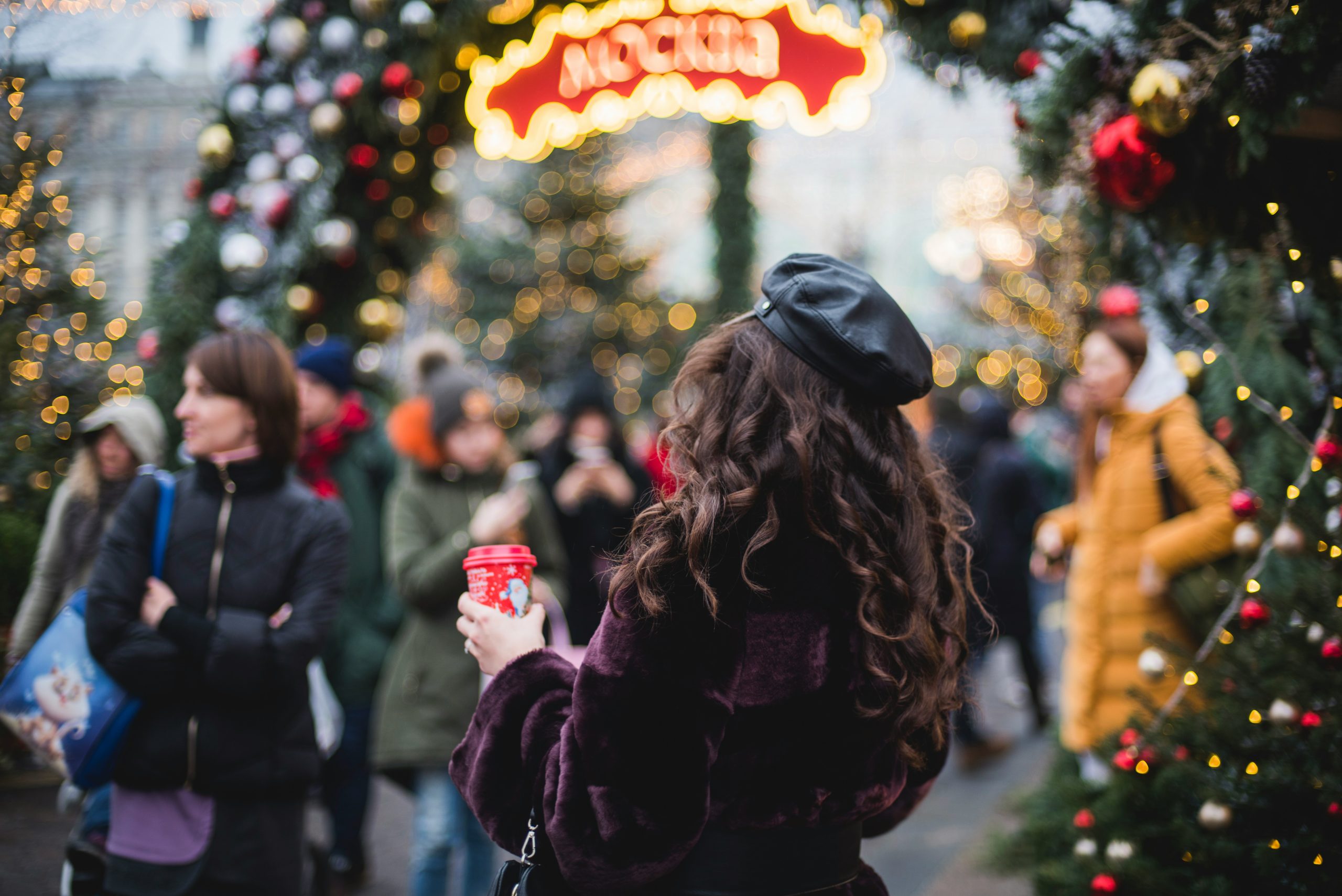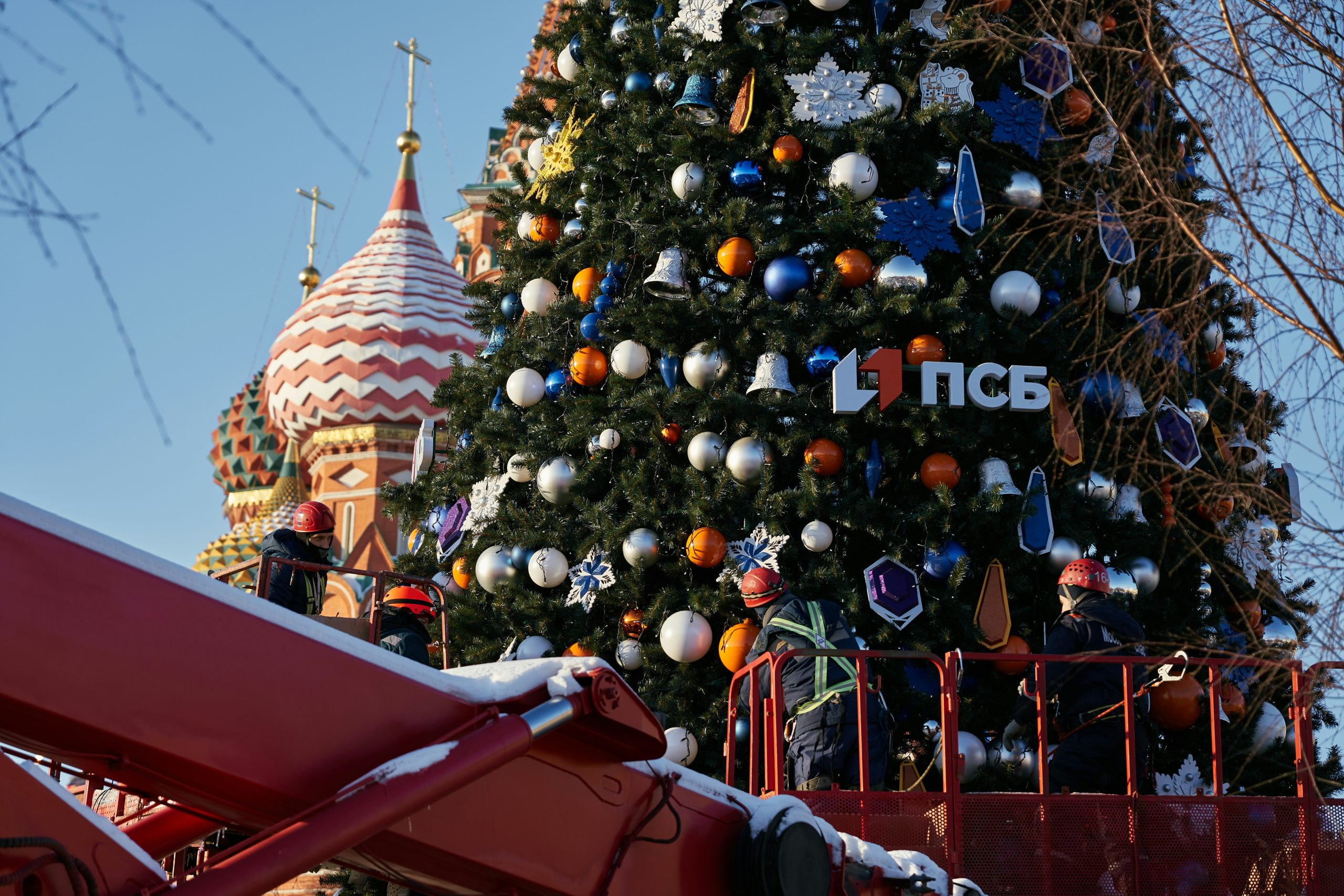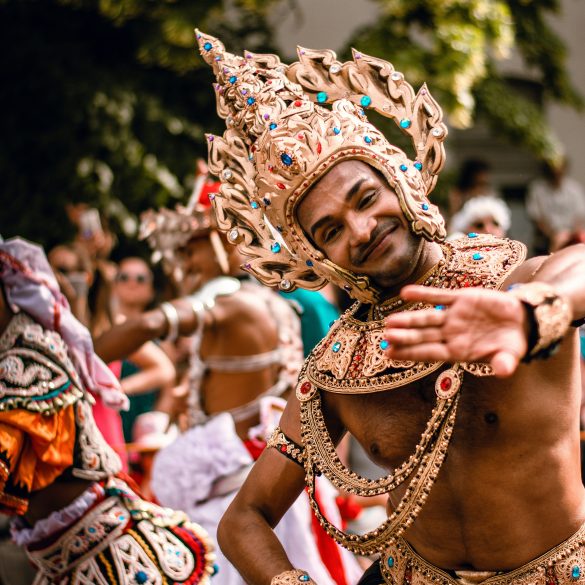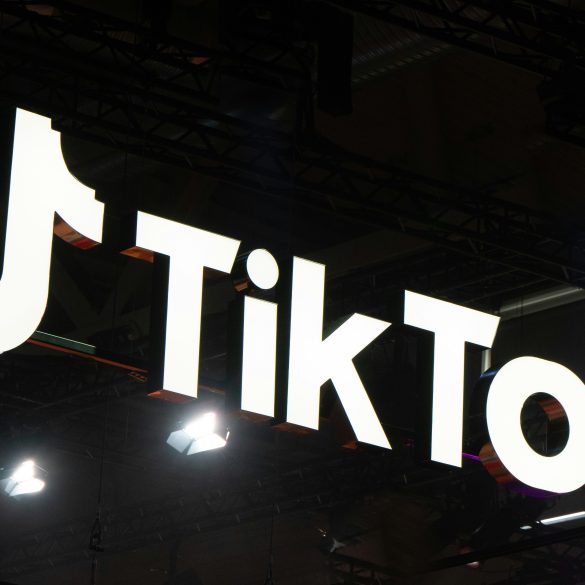American Holiday Traditions That Baffle International Visitors
Picture this: you’re visiting America during the holidays, expecting familiar celebrations, when suddenly you’re thrust into a world where people camp outside stores for shopping deals, cover entire houses in blinking lights, and gather around tables to dissect the emotional complexities of stuffing recipes. What gives?
Having spent years observing—and honestly, initially being completely bewildered by—American holiday traditions, I’ve come to understand that what seems bizarre to international visitors often reflects deeper cultural values that Americans themselves might not fully articulate. These aren’t just random customs; they’re windows into the American psyche, shaped by historical experiences, economic realities, and a uniquely American approach to celebrating community.
Cultural Context Alert
According to the U.S. Travel Association1, over 79 million international visitors experience American holidays each year, with 68% reporting confusion about local customs. Understanding these traditions isn’t just about cultural curiosity—it’s about connecting with the heart of American social life.
The thing is, Americans don’t just celebrate holidays; they perform them. There’s an intensity, a commitment to spectacle, and—let’s be honest—a competitive element that catches visitors off guard. I remember my first American Christmas, standing slack-jawed at neighbor houses that looked like they’d been attacked by a holiday light factory. My host family casually mentioned they’d spent three weekends installing their display. Three weekends! For lights that would stay up exactly six weeks.
Did You Know?
Americans spend approximately $6 billion annually on Halloween costumes alone—more than many countries spend on their entire holiday celebrations combined. The average American household dedicates 2.5% of their annual income to holiday-related expenses, according to recent Federal Reserve data2.
But here’s what I’ve learned: these seemingly excessive traditions aren’t about showing off (well, not entirely). They’re about creating shared experiences in a culture that values individualism so highly that people need extra-strong traditions to bind communities together. When your neighbor spends $300 on Halloween decorations, they’re not just decorating—they’re participating in a collective ritual that transforms ordinary suburban streets into temporary wonderlands.
The Thanksgiving Timing Mystery That Stumps Visitors
Let me start with the holiday that absolutely confuses everyone: Thanksgiving. Not the concept—plenty of cultures have harvest celebrations—but the timing. Why late November? Why Thursday? And why does it feel more important than Christmas to many American families?
The Thursday thing throws people off because most of the world celebrates significant holidays on weekends or fixed dates. But Americans basically shut down the entire country on a Thursday, creating what I call the “Thanksgiving traffic pattern”—millions of people simultaneously traveling to gather around tables to eat essentially the same meal their ancestors ate in 1621.
What visitors don’t realize is that Thanksgiving represents something uniquely American: the democratization of celebration. Unlike Christmas, which has religious overtones, or July 4th, which has political ones, Thanksgiving is secular enough for everyone but traditional enough to feel deeply rooted. It’s the one holiday where American families actually cook together, argue about recipes, and create the kind of controlled chaos that bonds people for life.
The Halloween Phenomenon That Leaves Visitors Speechless
Okay, let’s talk about Halloween, because this is where American holiday culture gets genuinely weird. I’ve traveled extensively, but I’ve never encountered anything quite like American Halloween intensity. We’re talking about adults who spend months planning costumes, neighborhoods that coordinate elaborate decorations, and children who strategically map out trick-or-treat routes like military operations.
In most countries, Halloween is either ignored or treated as a minor children’s activity. Americans have turned it into a full-scale cultural production. Walk through any American neighborhood in October, and you’ll see front yards transformed into haunted graveyards, families spending hundreds of dollars on decorations they’ll use for exactly one month, and adults who are genuinely disappointed if they don’t get to show off their costumes.
| Halloween Spending Category | Average Per Household | Total US Market | International Comparison |
|---|---|---|---|
| Decorations | $102 | $2.7 billion | 10x higher than UK |
| Costumes | $89 | $3.2 billion | 15x higher than Germany |
| Candy | $65 | $2.4 billion | 8x higher than Canada |
But here’s the thing visitors miss: Halloween isn’t really about scary stuff. It’s about permission. American culture is generally quite reserved—people don’t typically knock on neighbors’ doors, children don’t usually approach strangers, and adults don’t normally dress up in public. Halloween creates a temporary suspension of these social rules, allowing behaviors that would be bizarre any other day of the year.
Insider Perspective
The real Halloween magic happens in suburban neighborhoods where house-to-house trick-or-treating creates impromptu community gatherings. Parents follow their kids, neighbors chat on front porches, and for one night, American individualism transforms into collective celebration. It’s social engineering disguised as candy distribution.
I’ll never forget my first Halloween in America. My neighbor—a reserved accountant who barely made eye contact during the year—had transformed his front yard into an elaborate pirate ship complete with sound effects and fog machines. He spent the entire evening in full pirate costume, enthusiastically greeting children and staying completely in character. The next morning, he was back to nodding politely while getting his newspaper.
Christmas Decoration Extremes That Shock International Visitors
American Christmas decorations deserve their own category in the “things that baffle visitors” handbook. While other cultures might hang a wreath or put up a tree, Americans engage in what can only be described as seasonal architectural modification. Houses become billboards for Christmas spirit, with displays visible from space (okay, maybe not space, but definitely from the next county).
The scale is genuinely breathtaking. According to the American Christmas Tree Association4, the average American household uses over 400 feet of Christmas lights—that’s more than the length of a football field. Some neighborhoods coordinate their displays, creating driving tours that attract thousands of visitors. There are websites dedicated to mapping the best Christmas light displays, and families make annual pilgrimages to see them.
What visitors don’t understand is the social dynamics at play. Christmas decorating in America is partly competitive, partly collaborative, and completely voluntary—yet neighborhoods develop unspoken expectations about participation. The house that doesn’t decorate becomes conspicuous, not because anyone’s keeping score (except they totally are), but because Christmas decorations signal community membership.
- Inflatable lawn decorations that require constant electricity to maintain their shape
- Synchronized light displays choreographed to music that can be heard from cars
- Roof-mounted decorations that require professional installation and insurance considerations
- Indoor decorations that temporarily transform living spaces into Christmas villages
The timing is also uniquely American. Christmas decorations start appearing in November (sometimes Halloween decorations come down and Christmas ones go up the same weekend), creating a two-month celebration period that other cultures find excessive. But Americans have essentially extended Christmas from a single day into a season-long experience of anticipation and shared aesthetic.

Fourth of July Patriotic Displays That Overwhelm Visitors
Independence Day in America is… a lot. Like, genuinely a lot. I’ve experienced national holidays in dozens of countries, but American patriotic expression on July 4th operates on a completely different level. It’s not just about celebrating independence; it’s about performing American identity in the most American way possible—with barbecues, fireworks, and enough red, white, and blue to make the flag jealous.
The thing that catches visitors off guard is how personally Americans take patriotism. This isn’t government-mandated celebration; it’s grassroots enthusiasm that bubbles up from neighborhoods, families, and communities. People voluntarily coordinate patriotic outfits, organize block parties, and spend their own money on fireworks displays that would make some countries’ official celebrations look modest.
Cultural Translation
American July 4th celebrations aren’t about military might or political power—they’re about celebrating the idea of America. The barbecues, parades, and fireworks represent democratic participation in national identity. Everyone gets to be patriotic in their own way, creating a holiday that’s simultaneously collective and individual.
I remember attending my first Fourth of July barbecue, expecting something similar to other countries’ national day celebrations. Instead, I found myself at a neighborhood gathering where people had coordinated their food contributions, decorated their houses in patriotic themes, and planned activities that would last from morning until well after dark. The commitment was impressive and slightly overwhelming.
What’s particularly fascinating is how Americans have democratized patriotism. Unlike countries where national celebrations are primarily government events, American July 4th is intensely local and personal. Neighborhoods organize their own parades, families host their own barbecues, and communities create their own fireworks displays. It’s patriotism from the ground up, which explains why it feels so authentic and occasionally so intense.
Black Friday Shopping Hysteria That Mystifies International Observers
And then there’s Black Friday. Oh, Black Friday. Where do I even begin with this uniquely American phenomenon that transforms the day after Thanksgiving into a retail apocalypse? This isn’t just shopping—it’s competitive shopping, strategic shopping, shopping as contact sport.
The preparation alone is bewildering. Americans study store advertisements like military intelligence, map out shopping routes, coordinate with friends and family members, and wake up at hours typically reserved for insomniacs and shift workers. All to… buy stuff at discounted prices? The logic seems straightforward until you witness the actual execution.
| Black Friday Metric | 2023 Statistics | Historical Comparison | Global Context |
|---|---|---|---|
| Shoppers | 196 million | +13% from 2019 | More than most countries’ population |
| Average spending | $967 per person | +15% from previous year | Equivalent to monthly income in many countries |
| Store opening times | 4:00 AM average | Used to be midnight | Earlier than most countries start work |
According to the National Retail Federation6, Black Friday has evolved into a cultural ritual that extends far beyond simple bargain hunting. It’s become a shared experience that marks the official beginning of the American Christmas shopping season, complete with its own traditions, strategies, and social dynamics.
What international visitors don’t grasp is that Black Friday shopping isn’t really about the discounts—it’s about the experience. Americans have turned shopping into adventure, complete with planning, strategy, teamwork, and victory celebrations. The people camping outside stores aren’t desperate for bargains; they’re participating in a uniquely American tradition that combines commerce with community.
- Pre-shopping reconnaissance involving store layout memorization and deal prioritization
- Strategic team formation with family members and friends assigned specific missions
- Endurance preparation including comfortable shoes, snacks, and backup plans
- Post-shopping celebration and story-sharing about victories and near-misses
The aftermath is equally fascinating. Americans don’t just buy things on Black Friday—they talk about their Black Friday experiences for weeks afterward. The deals become conversation starters, the shopping strategies become family legends, and the entire experience transforms from retail transaction into shared cultural memory.
The murga performances particularly fascinate me—these are theatrical groups that use humor, music, and satire to comment on politics and social issues. It’s democracy in action, where ordinary citizens can publicly critique their government through art. The creativity and bravery involved is truly inspiring.
What sets Montevideo apart is its intimate scale. Instead of massive crowds, you experience smaller neighborhood celebrations where locals invite you to join their comparsa (carnival group). It feels more like being adopted by a family than attending a festival.
| Festival | Best Time | Duration | Budget Level |
|---|---|---|---|
| Día de los Muertos | Nov 1-2 | 3 days | Moderate |
| Rio Carnival | Feb/Mar | 5 days | High |
| Inti Raymi | June 24 | 1 day | Low |
| Semana Santa | March/April | 7 days | Moderate |
| Montevideo Carnival | Jan-Mar | 40 days | Low |
Essential Festival Travel Tips
- Book accommodations 6-12 months in advance for major festivals
- Learn basic Spanish phrases—locals appreciate the effort
- Bring comfortable walking shoes and layers for weather changes
- Respect local customs and ask permission before photographing participants
- Consider hiring local guides for deeper cultural context
Looking back on my experiences with these festivals, I’m struck by how they’ve fundamentally changed my understanding of celebration itself. These aren’t just parties—they’re living expressions of identity, resistance, and community that have survived centuries of change.
What makes Latin American festivals so special is their ability to make strangers feel like family. Whether you’re dancing cumbia in Barranquilla, creating alfombras in Antigua, or carrying flowers in Medellín, you become part of something larger than yourself. That’s the real magic—not just witnessing culture, but becoming temporarily absorbed into it.
If you’re planning to attend any of these festivals, my advice is simple: go with an open heart and empty expectations. Let the music move you, the colors dazzle you, and the people embrace you. These celebrations will give you memories that last a lifetime and a deeper appreciation for the rich cultural tapestry that makes Latin America so extraordinary.
References



